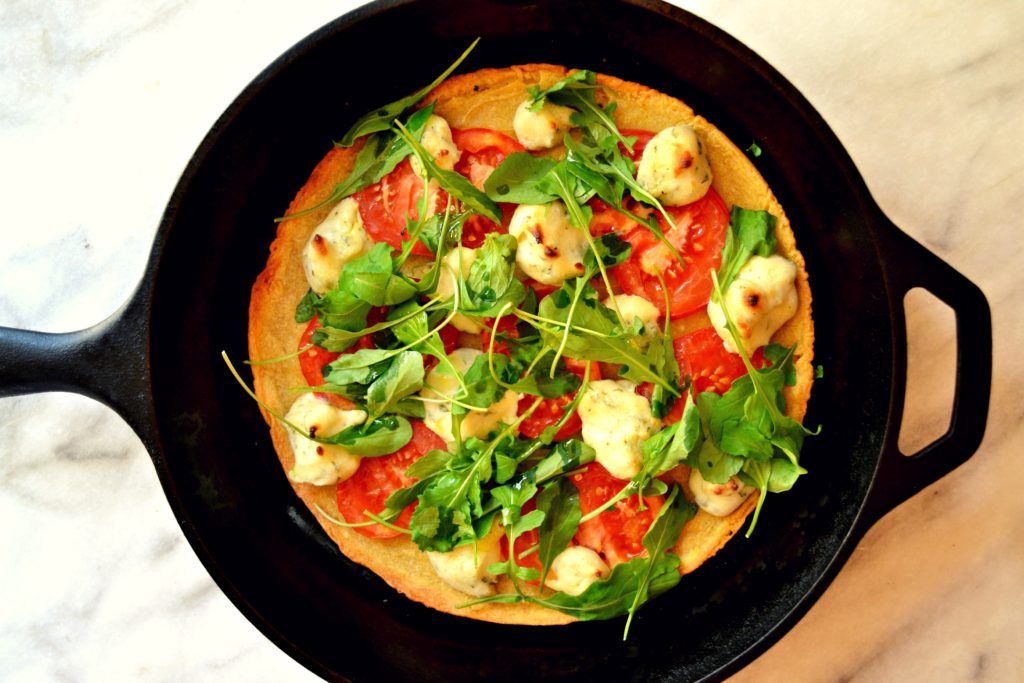Arugula, also known as rocket in English, is a leafy green vegetable that is most often consumed raw. It is native to the Mediterranean, but can be grown in the United States. The leaves of arugula are usually harvested in the summer, but it can also be harvested in the winter. Arugula has a mild taste, and is very low in calories. It comes in a variety of colors, including black, white, red, and green, and has a nutty flavor. This leafy vegetable is packed with nutrients . The calcium in arugula helps strengthen the bones and teeth, and also helps regulate your heart rate. The folate in arugula is good for your eyes and the nervous system.
With so many delicious ways to serve up arugula, it’s hard to choose just one recipe. Whether you’re looking for a side dish to accompany a main dish, or a salad to enjoy at room temperature, you’ll find many ways to enjoy this fresh, peppery green.
Arugula is a popular green leafy vegetable used in a variety of dishes. It has a bitter taste but is highly nutritious, being low in calories and high in vitamins and minerals.
A Quick Look
Arugula is a member of the Brassica family and has a spicy taste as well as historical importance. Arugula was considered an aphrodisiac in Ancient Rome and was prohibited to be cultivated in the Roman Catholic Church’s monastery gardens. Arugula resembles a tiny, slender oak leaf and has a crisp, peppery flavor with mustard overtones. Arugula is usually consumed raw and is very nutritious, including high levels of vitamin A, vitamin K, folate, and vitamin C. Arugula may be used as a strong salad foundation or as a topping atop pizza, as the Italians do.
Overview
Do you think we’re discussing another another uninteresting salad green?
Reconsider your position.
Arugula has a fiery, pungent taste, as well as a fiery history.
Arugula is a Mediterranean vegetable that was used as an aphrodisiac by the Ancient Romans. In fact, the early Roman Catholic Church forbade the growth of arugula in its monastery gardens because of its disruptive qualities.
Arugula, whether or not it adds spice to your trousers, will bring spice to your dish. Arugula is a member of the Brassica family of plants, and like mustard and radish, it has a spicy taste characteristic.
Arugula is now widely used as a garnish throughout North America, the Mediterranean, South America, and Western Europe (where it is known as “rocket”).
Identification
Arugula is a grassy green leaf with deep, curved indentations, similar to an oak leaf on a smaller size.
Young leaves are delicate and delicious, with a strong, peppery sting and mustard overtones. Arugula is often combined with milder/more neutral-tasting greens, but for those who want a bold taste statement, arugula provides a beautiful, though noisy, salad foundation.
Although ripe arugula leaves are less frequent, they are bigger and typically offered in bunches. They are considerably more bitter and harsher tasting than their younger cousins, and they are often cooked to temper their astringent taste, usually with fatty or sweet substances.
Nutritional Information
5 calories, 1.0 g protein, 0.3 g fat, 1.5 g carbs, 0.6 g fiber, and 0.8 g sugar in two cups of raw arugula (approximately 40g). Arugula is a rich source of vitamin K, folate, and vitamin C, as well as a great source of vitamin A.
Selection
Arugula is in season during the summer or in milder regions, although it is often cultivated in hothouses and may be found year-round in most major food shops. It’s also available at farmers’ markets throughout the season.
As previously said, younger, smaller arugula leaves have a milder flavor and are more sensitive than older, more bitter ones. Salad greens are usually offered in bags or plastic clamshells with the younger leaves.
Pick leaves that are crisp, brilliant green, and show no indications of wilting or damage. If your arugula has yellowing, staining, or sliminess, it’s beyond its prime.
Storage
When storing arugula, keep it loosely packed in a tight bag or container in the refrigerator’s crisper.
If you don’t clean the arugula until you’re ready to eat it, or if you pack it too tightly, it will wilt prematurely, and if left too long, it will turn to mush.
Preparation
Arugula does not need any additional preparation other than a quick rinse before eating.
Raw arugula is excellent on its own or combined with a variety of other greens in a salad, and it may also be gently sautéed and added to various prepared meals.
Arugula is often used to top pizzas in Italy, either sprinkled on top at the very end to cook for just a few minutes or placed uncooked soon after the pizza has been taken out of the oven. They will tell you that their pizza is the greatest pizza in the world.
SOCCA PIZZA WITH ARUGULA AND VEGAN MACADAMIA CHEESE

This vegan pizza has a high-protein crust made from socca, a chickpea flour-based flatbread. Tender arugula leaves provide aesthetic appeal as well as a delightful peppery freshness, and vegan macadamia cheese adds a creaminess comparable to fresh ricotta.
Ingredients
Socca is made from chickpea flour. filtered water, 1/2 cup 1/2 cup olive oil, plus a little more for pan seasoning 1 tbsp garlic cloves, finely minced 2 garlic cloves (salt) 1/2 teaspoon Macadamia nuts (cheese) 1 cup water (filtered) half a cup of lemon juice 1 teaspoon of salt 1/2 teaspoon basil, finely minced a few cranks 1 tbsp ground pepper Socca flatbread is used to make pizza (recipe above) 1 tbsp macadamia nut butter (recipe above) 1 arugula batch 1 cup finely cut tomato in circles 1 tbsp olive oil sprinkle
Directions
Time to Prepare: 25 minutes Time to prepare: 17 minutes There are 4 servings in this recipe.
To make the Socca Flatbread, combine the following ingredients in a large mixing bowl.
In a mixing bowl, whisk together the flour, garlic, and salt. In the middle, make a well and pour in the olive oil and water. Whisk together with a fork until no dry lumps remain and a liquid batter forms. If the batter is still too thick, add a tablespoon of water at a time until it thins down a little. Allow this batter to rest for 30 minutes to 4 hours on the counter or in the refrigerator. You may make the macadamia nut cheese in the meanwhile (recipe below).
Preheat the oven to 400 degrees Fahrenheit once the batter has rested for the required amount of time. Place a 9-inch cast iron pan in the oven to heat while the oven is preheating. Remove the skillet from the oven once it has been warmed and coat it with olive oil (about a tablespoon). Place the pan in the oven and pour the socca batter evenly over the top. Remove it from the oven after 10-12 minutes of baking.
Follow the final cooking directions in the section below under “Socca Pizza.”
To make the Macadamia Nut Cheese, combine the following ingredients in a mixing bowl.
In a high-powered blender or food processor, combine the macadamia nuts, water, lemon juice, and salt. Process until smooth and creamy, similar to ricotta cheese.
Stir in the fresh basil and pepper using a spoon or spatula. Remove from the equation.
To make the Socca Pizza, combine the following ingredients in a large mixing bowl.
Arrange your toppings over your newly cooked socca, except the arugula, which you should put last. Drizzle with olive oil and broil for approximately five minutes on the top shelf of the oven.
Remove the pizza from the oven once the five minutes are up and top it with fresh arugula. Drizzle with a little extra olive oil, season with a sprinkle of salt, and set aside for five to ten minutes to cool. To serve, cut into slices and enjoy.
Book of Free Recipes
Every month, the Encyclopedia of Food grows as we include new delicacies and stunning food photography. Simply click this link to keep up with the latest news. Following that, we’ll give you a complimentary copy of our recipe book. We’ll also notify you when we introduce new and tasty items to the site.
For a free copy of the Encyclopedia of Food recipe book, go here.
Foods That Are Related
Arugula is a nutritious green leafy vegetable that is often used in salads, sandwiches, or as a garnish. Arugula is a member of the mustard family, and it is found in a variety of colors and varieties. Common greens such as arugula are a good source of vitamins A and C. They contain small amounts of iron, calcium, and potassium.. Read more about arugula pesto and let us know what you think.
{“@context”:”https://schema.org”,”@type”:”FAQPage”,”mainEntity”:[{“@type”:”Question”,”name”:”What do I do with a lot of arugula?”,”acceptedAnswer”:{“@type”:”Answer”,”text”:”
You can use it in a salad, or you can make pesto with it.”}},{“@type”:”Question”,”name”:”What does cooked arugula taste like?”,”acceptedAnswer”:{“@type”:”Answer”,”text”:”
Cooked arugula tastes like a slightly bitter, peppery flavor.”}},{“@type”:”Question”,”name”:”Why is arugula bad for you?”,”acceptedAnswer”:{“@type”:”Answer”,”text”:”
Arugula is a type of leafy green vegetable that is high in oxalates, which can be toxic to the body.”}}]}
Frequently Asked Questions
What do I do with a lot of arugula?
You can use it in a salad, or you can make pesto with it.
What does cooked arugula taste like?
Cooked arugula tastes like a slightly bitter, peppery flavor.
Why is arugula bad for you?
Arugula is a type of leafy green vegetable that is high in oxalates, which can be toxic to the body.
Related Tags
This article broadly covered the following related topics:
- arugula side effects
- arugula
- arugula benefits
- what is arugula
- arugula vs spinach
 HQ Grande Prairie HQ Grandie Prairie is an online news portal aimed at providing latest day to day happenings of the World to its viewers.
HQ Grande Prairie HQ Grandie Prairie is an online news portal aimed at providing latest day to day happenings of the World to its viewers.
